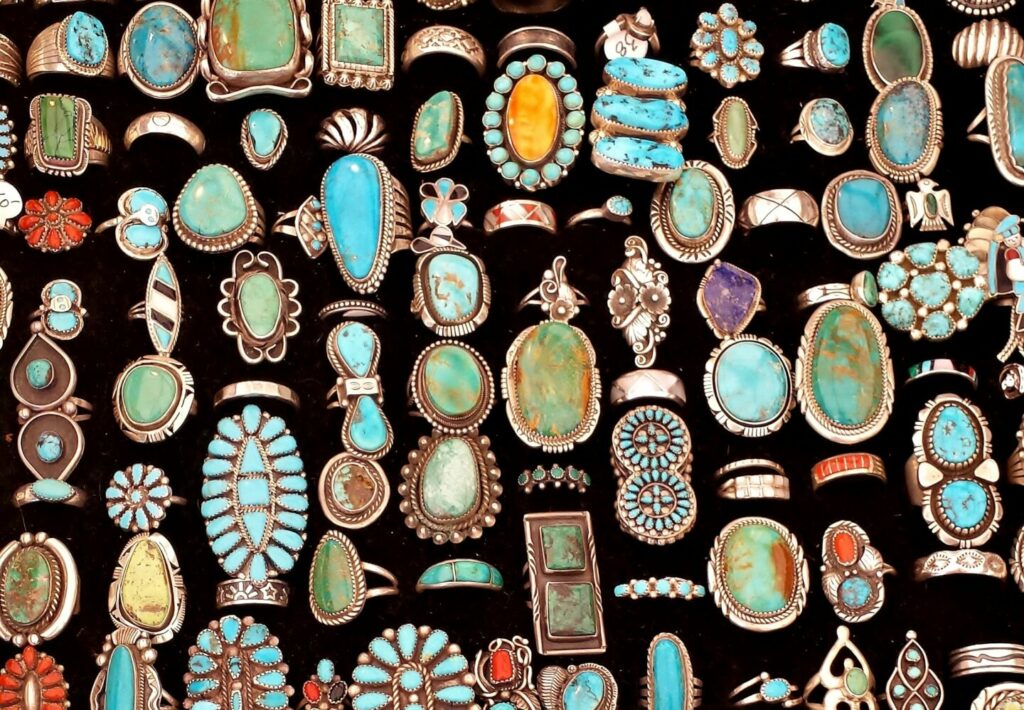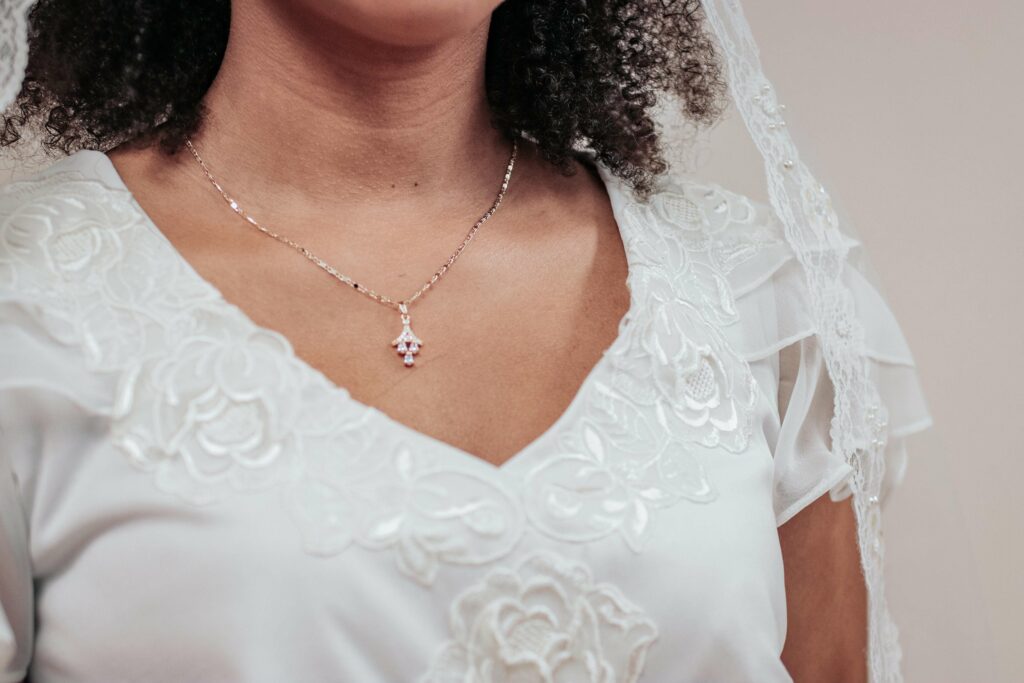What are Some of the Different Types of Pearls and How Do You Take Care of Them?
Written by Serena Norr
April 3, 2018
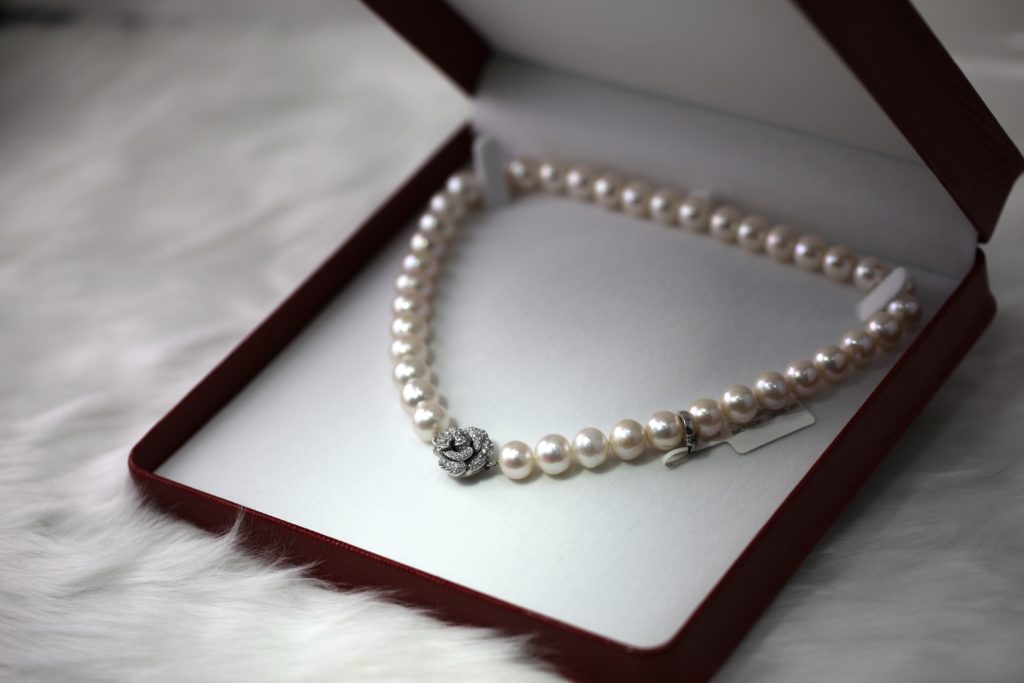
Pearls are rare treasures from the sea that are also loved piece of jewelry, renowned for their timeless appeal. However, understanding pearls can sometimes be confusing as there are so many different types of pearls out there that includes everything from freshwater to cultured pearls (to everything in between). They also require a specific way to care and maintain them. To help you to better understand pearls, we're sharing a guide to some of the different types ou there, plus some tips on how to clean them. Read on to learn more about pearls:
Guide to the Different Types of Pearls
1. Natural Pearls
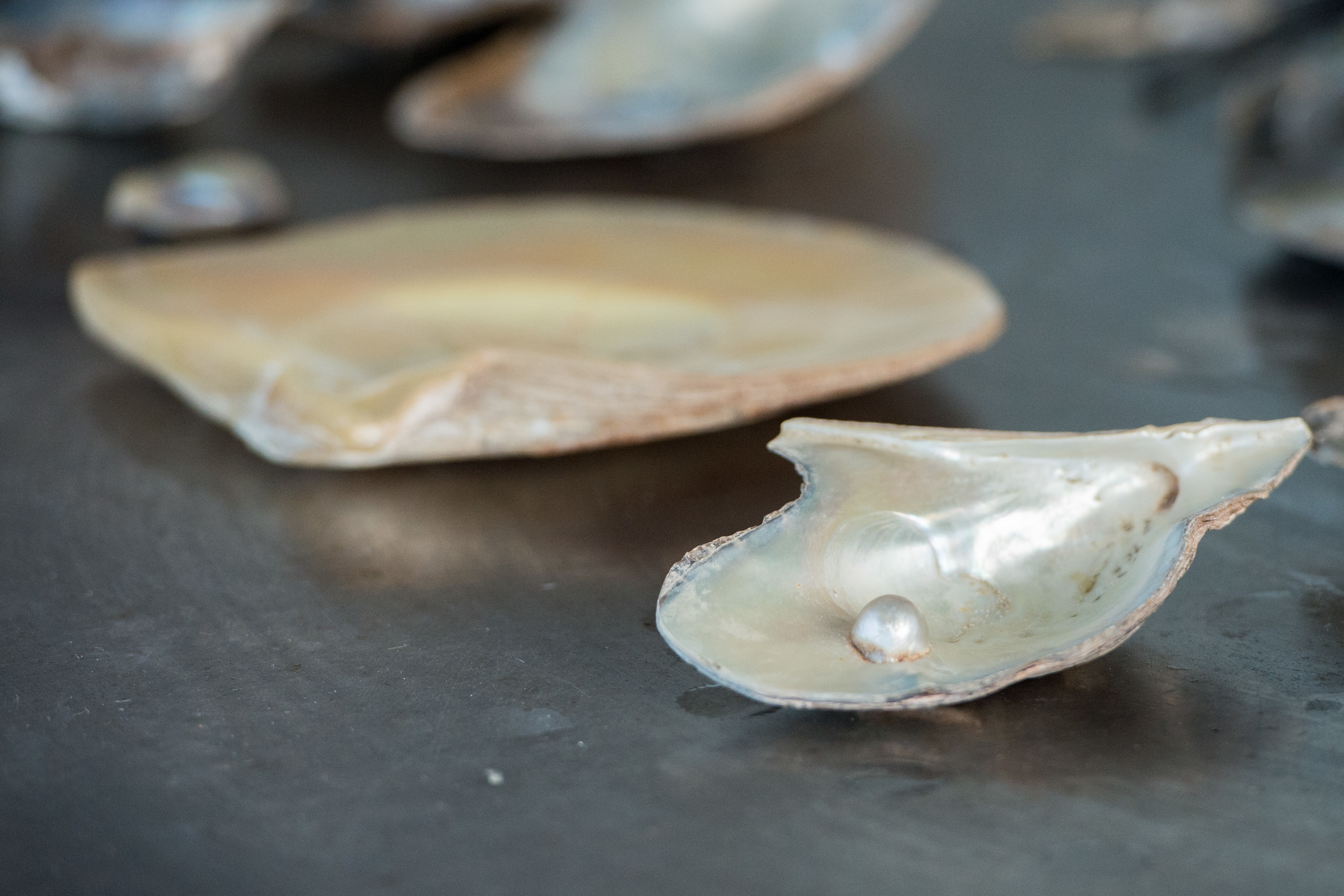
Natural pearls are typically found in the Middle East in the area of the Persian Gulf. However, they are very rare, as many have already been harvested and acquired. If you do come across these types of pearls, you'll find that they are usually very small and very expensive.
2. Cultured Pearls
Cultured pearls are grown on pearl farms. Sea mollusks (invertebrate, soft bodied animals with hard outer shells) help produce the pearls through a process of implantation. A pearl expert will place a bead of mother-of pearl within a mature mollusk, and the animal will be placed in the water and attended to while the pearls begin to form.
Unfortunately, not every one of these mollusks will create a pearl, and those pearls that are produced will not necessarily be of the best quality. Thousands and thousands of the completed pearls require checking for uniformity and the characteristics necessary to form a standard, princess length (17-19 inches) necklace.
3. Types of Cultured Pearls
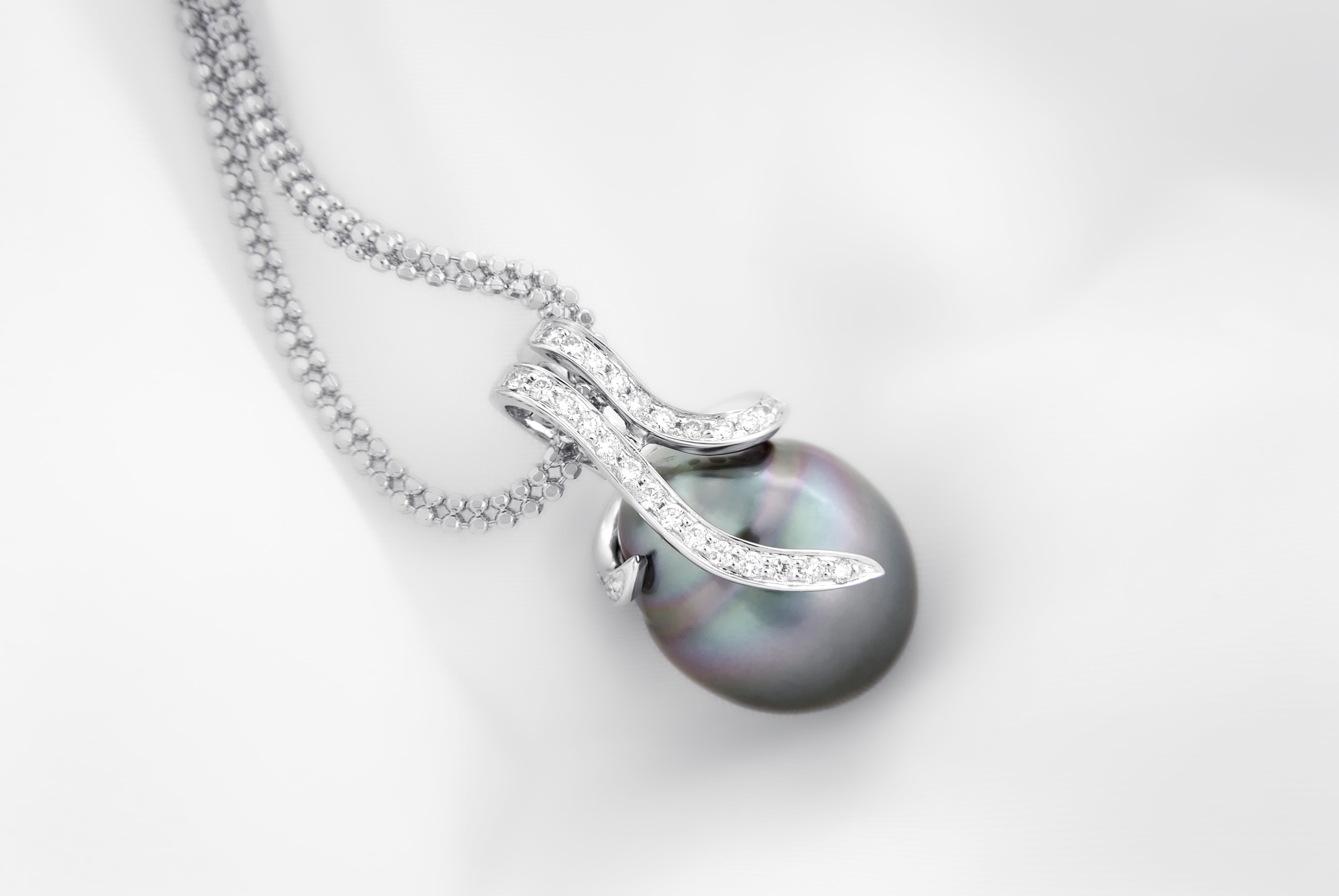
Cultured pearls can be harvested in fresh water and salt water, and varying types of mollusks can create pearls with different features.
4. Akoya Pearls
Akoya pearls are farmed in Japanese and Chinese ocean waters and have been a part of the cultured pearl industry since the beginning of the 20th century. They are pristine cultured pearls that are rounded to perfection and have a white, shiny and lustrous appearance, though they can be found in cream and black. Black coloration requires a treatment process. The standard pearl size is between 7.00 mm and 7.5 mm and larger sizes are rare. Akoya pearls are recognizable and affordable. Their dazzling and rounded qualities single them out from other pearls, particularly when they are strung as a single strand.
5. Freshwater Pearls
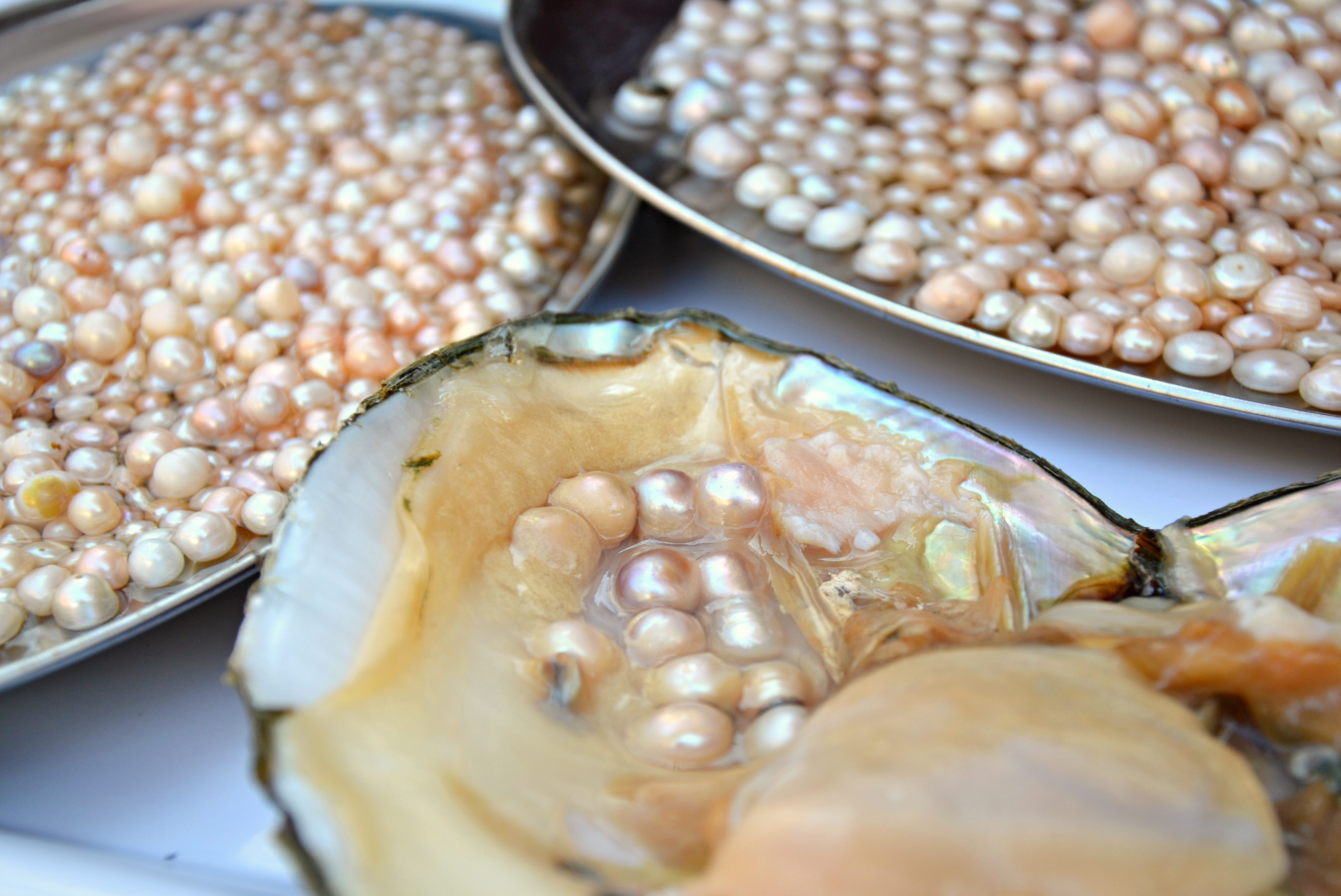
Freshwater pearls were once considered of lesser quality and cost than their Akoya pearl counterparts, but they are now seen as competitors with Akoya in both areas of quality and value. They range in size from 2.0 mm to 15.0 mm and come in white or cream, and can be treated for black coloration. Freshwater pearls have improved significantly since the early 1990s with their classic round and gleaming appearance, and their wide range of choices in sizes, colors and shapes. Freshwater pearls are harvested from mussels and are mainly produced in China as well as India and China.
6. Tahitian Pearls
Tahtian pearls, once considered rare and designated for royalty, are found in areas of French Polynesia and the temperate waters of the South Sea. They are black in color and formed through the Black-Lipped oyster. They are characterized by their larger size, gleaming appearance and round shape. They range in size from 8 mm to 21 mm and can appear in varying shades of gray, blue, green, purple and brown.
7. South Sea Pearls
South Sea pearls are rare because of their large size and gleaming white and gold coloration. Pearls from the South Sea are sought after because of their extraordinary size and unbelievable sheen. They are a saltwater pearl that are harvested from an oyster group that is found in Southeast Asia, northern Australia and the Philippines. The pearls range in size from 8 mm to 20 mm with a standard size of 13 mm. They are commonly white, cream and silver in color.
8. Blue Pearls
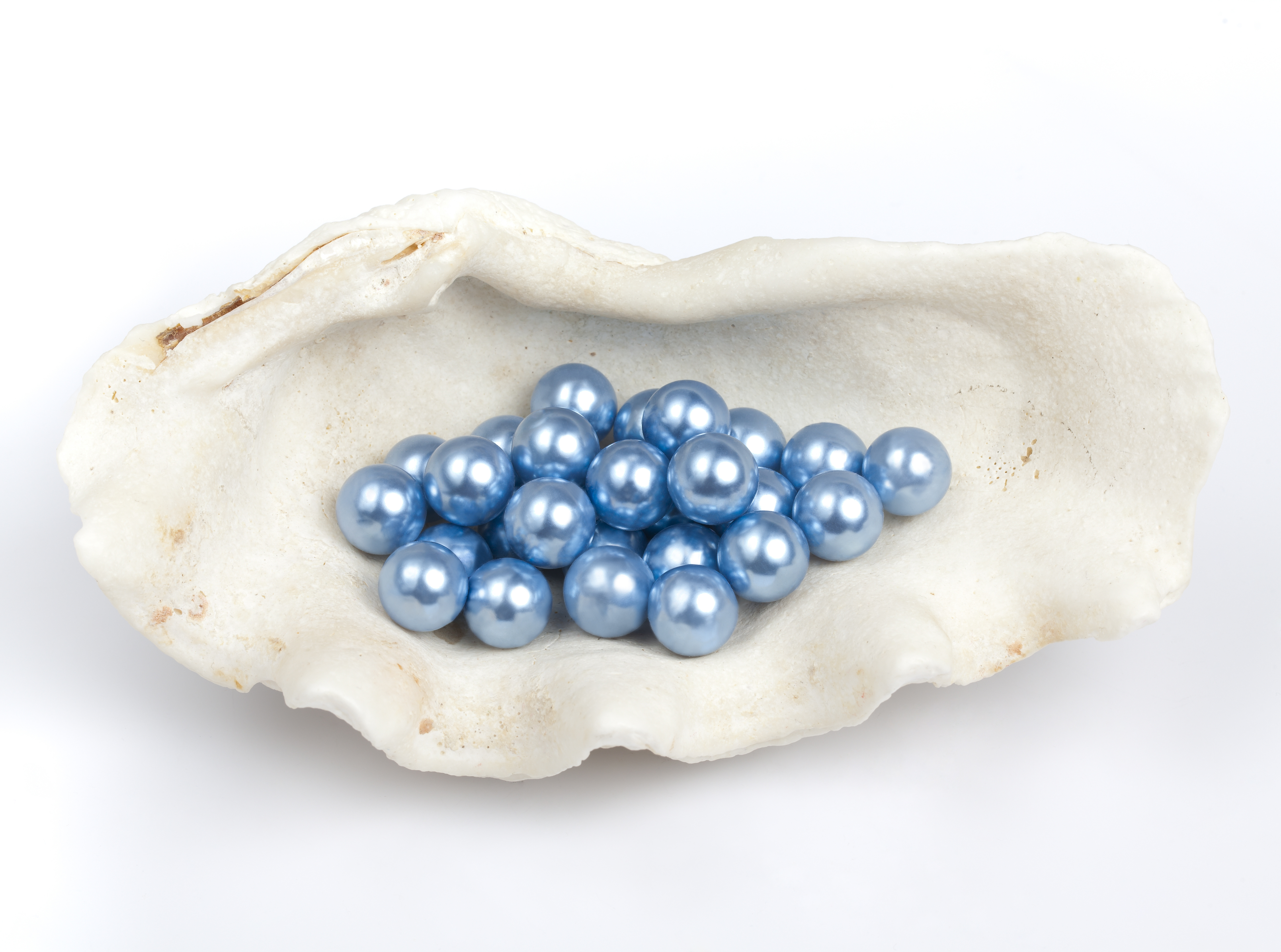
Blue pearls in a shell isolated on white background
Blue pearls are formed in an Abalone variety of mollusk. They are somewhat oblong in appearance and come in a range of blue colors, but they may be found in pinks, greens, lavenders, golds and reds, which are brought about by the way light reflects on them.
9. Mabe Pearls
Mabe pearls, or half pearls, are a somewhat spherically shaped pearl that is formed within the shell of a saltwater mollusk rather than in the fleshy inner body portion. Their range of sparkling colors include pastel pinks and blues, which have a rainbow like quality. Their formation produces a pearl with a flat side rather than one that is more rounded. They are cultivated in areas around Indonesia, Australia, Japan and French Polynesia. Mabe pearls are also known as penguin wing oysters and are distributed throughout the world for use and access by pearl farmers.
10. Keshi Pearls
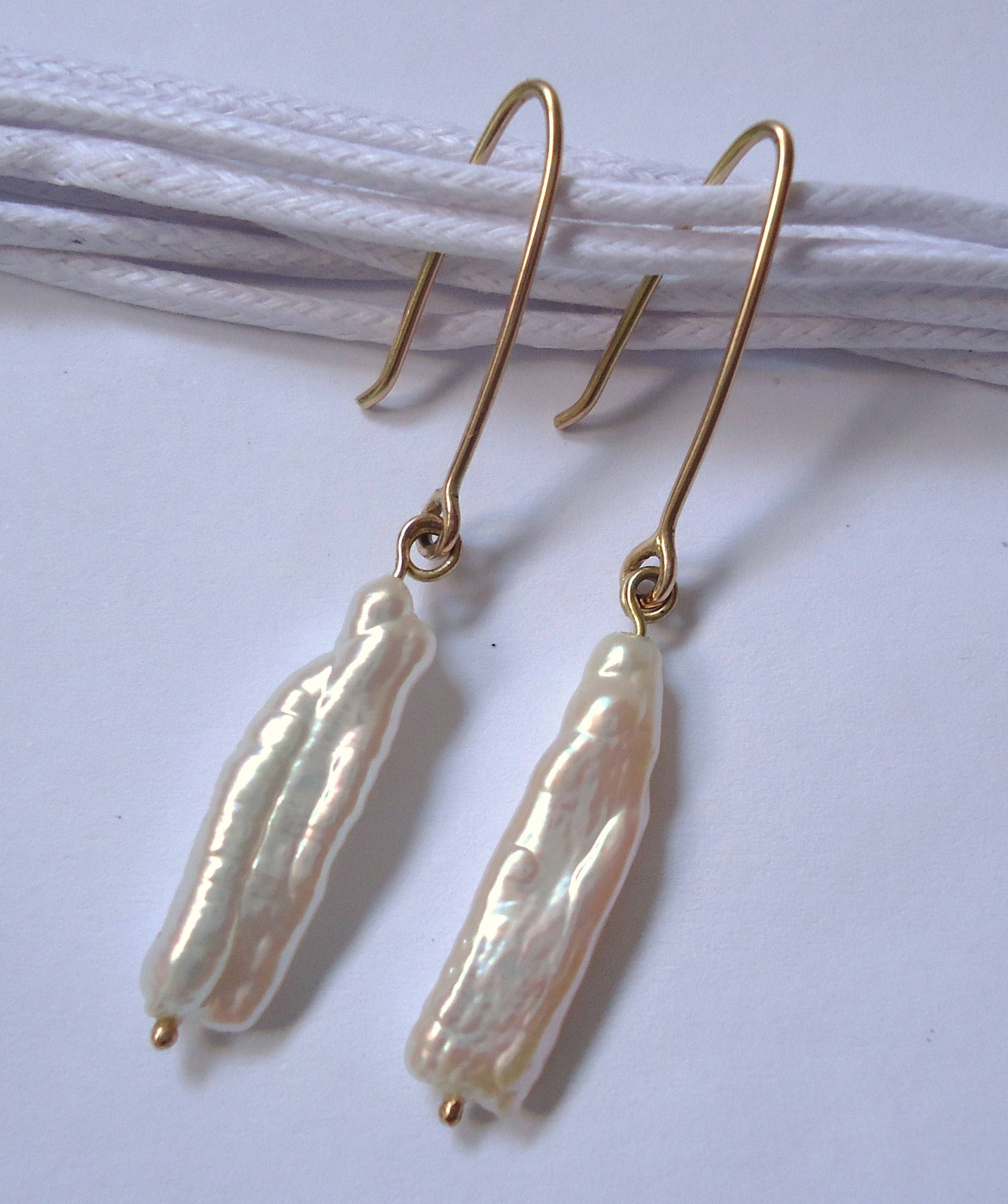
Keishi refers to the Japanese term poppy seed, and Keshi pearls are mini sized pearls that were originally leftovers from pearl culturing. Excess debris enters the oyster through the cultivating process and the oyster covers or encloses the debris with its nacre (layers of covering around the debris). During this process, the keshi pearl is formed. The pearl is either flat, rectangular, oval or off round in shape and can appear spike-like. It is produced in different colors, such as white, grey, black and rose. Its broad composition gives the pearl a very glossy and wavering appearance. They are a South Sea and Tahitian pearl.
11. Imitation Pearls
Almost every woman, young or old, has owned imitation pearls, which are simply glass beads that have been covered with an overly lustrous coating that is recognizable and can be differentiated from cultured and natural pearls.
How to Care for Pearls
Pearls require care, which can come through specifically designed pearl care kits or other means. Pearls are a delicate, organic gemstone that can be affected by cosmetic products, perfumes and hairsprays. Also, pearls should not be exposed to acids and chemicals and should only be worn after all cosmetics and other products have been applied. Other care concerns include the following:
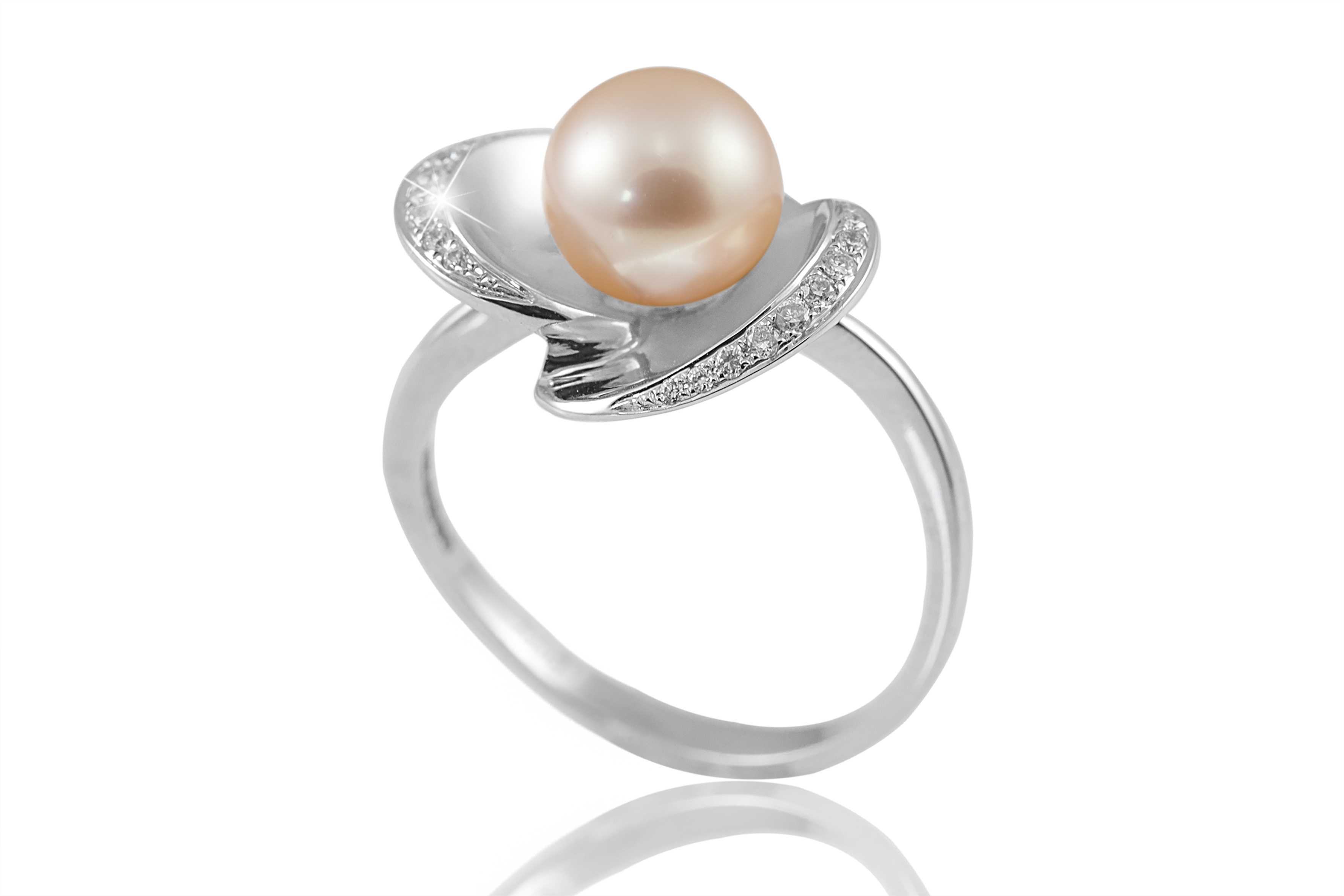
- Pearls are susceptible to scratches, particularly with rings and bracelets, so these jewelry items should be removed before activities involving sports, laborious jobs, and bathing animals.
- Pearls can be gently wiped with a soft cloth after they are removed. Any sign of perspiration should be immediately wiped away, as it can cause loss of a pearl's luster.
- A small amount of water can be used to clean pearls as well, but do not scrub them harshly or wipe them too hard. Do not use rough brushes or harsh chemicals. Baby shampoo or other mild soaps can be used for cleaning with a very soft manicure brush or a gentle, soft bristled toothbrush.
- Again, gentle cleaning movements are the key. When rinsing away debris or gentle soap, only use distilled or mineral water, as regular water contains chemicals that could damage the pearl's surface. Never allow either chemicals or water to remain on pearls for any amount of time.
- Unless specifically made for pearl cleaning, avoid ultrasonic and jewelry cleaners, as they are too harsh and rough on pearls and can cause damage.
- When storing pearls, they should be separated from other jewelry and placed in silk bags, boxes that are lined with velvet, or in satin pearl keepers.
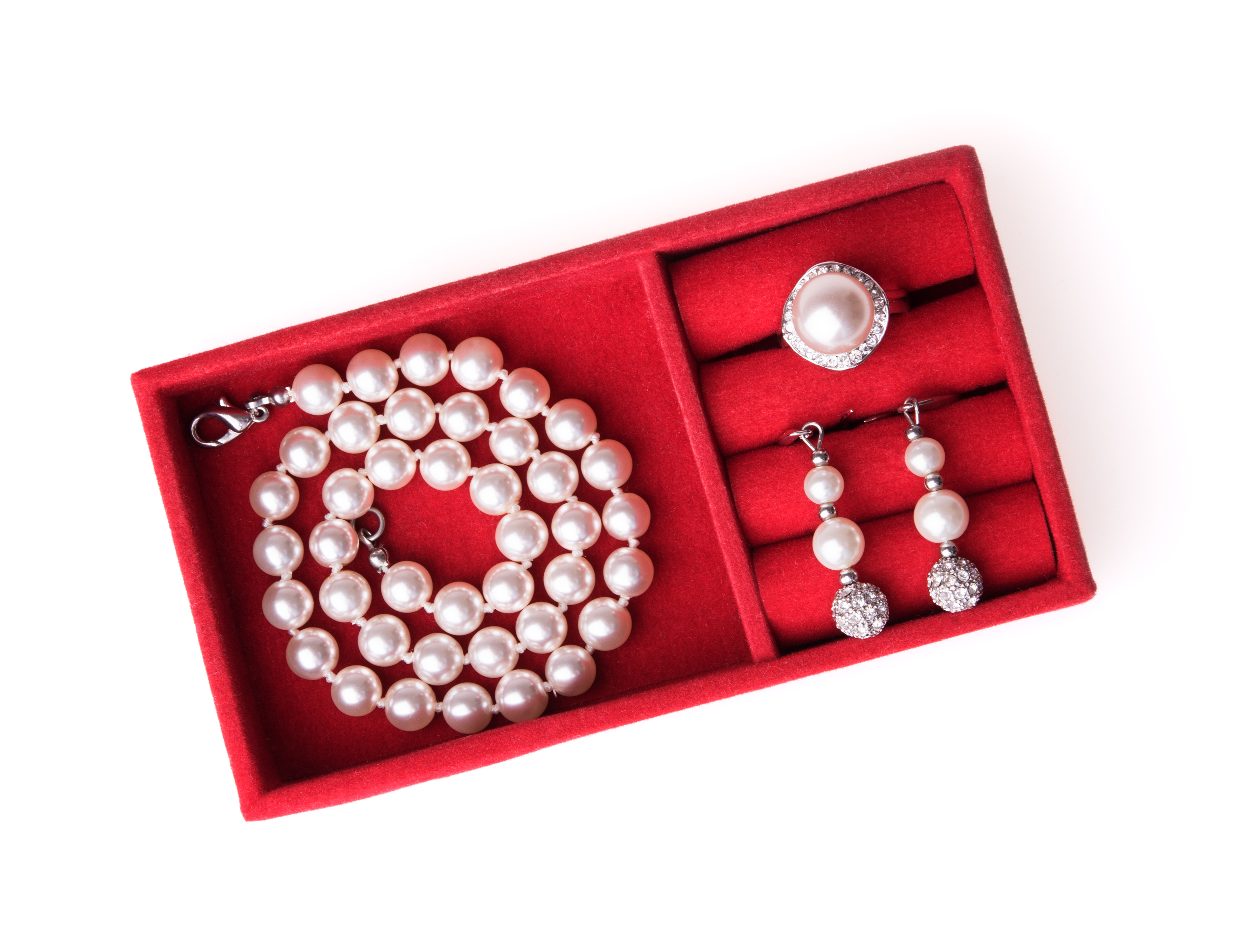
Pearls are every woman's dream of the perfect piece of jewelry. Finding the right type is important for any woman, as is taking care of pearls in the proper manner. As fashion designer and fashion icon Coco Chanel once said, “A woman needs ropes and ropes of pearls.” She was right.
We hope that this guide helped you to understand pearl types and names and how to care for pearls.
If you have any worries regarding your pearls, just send it over to us and we will check it out for you in no time! Get started here.
